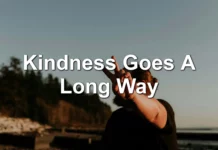If you talk to most leaders today—young leaders, older leaders, and pretty much everyone in between, they’re tired. Fatigued. Exhausted. Depleted.
If you talk to most leaders today—young leaders, older leaders, and pretty much everyone in between, they’re tired. Fatigued. Exhausted. Depleted.
What’s weird is that everyone thought it would get better once COVID became less of a factor, but it didn’t. The restrictions and immediate crisis may have lifted, but the fatigue never did.
The relief many leaders sought—changing jobs, moving cities, changing careers, working from home, vacations, Sabbaticals—didn’t solve the overwhelm and underlying dread a lot of us feel. If anything, they were brief respites that provided only temporary relief until the exhaustion crept in again.
So what gives? What’s really going on?The relief many leaders sought—changing jobs, moving cities, changing careers, working from home, vacations, Sabbaticals—didn’t solve the overwhelm and underlying dread a lot of us feel. If anything, they were brief respites that…CLICK TO TWEET
The Heart of the Problem
You can’t expect time off to heal you when the problem is how you spend your time on.
Given how work has so overwhelmingly changed in the last decade, most of us feel like our work—whatever it is—is never finished (here’s why). Thanks to changes in technology (you used to go to the office, now the office goes to you), we can work all the time, so many of us do. It’s just too easy to keep the laptop open while the family is watching Netflix or to be on your phone when your daughter is on the field.
Time off doesn’t heal chronic overworking.
Why? Well, you can’t expect time off to heal you when the problem is how you spend your time on.Time off doesn’t heal chronic overworking. Why? Well, you can’t expect time off to heal you when the problem is how you spend your time on.CLICK TO TWEET
I learned this the hard way.
As a young leader in my thirties, I thought I was decent at time management. I’d kept the wolves at bay for a decade as the church I was leading experienced double-digit growth year after year. Then I burned out. The reality hit me so hard: if you don’t declare a finish line, your body will.If you don’t declare a finish line, your body will.CLICK TO TWEET
50,000 People Are Mastering a Sustainable Way To Lead
A year ago, my book and course At Your Best came out.
To date, we’ve been able to help over 50,000 leaders manage their time, energy, and priorities in a much more sustainable way with the principles I outline in the book (and for those who want an even deeper transformation, the At Your Best Course).
The results have been astounding (see the end of this post for more). People have started sleeping eight hours a night, getting more done at work, launched their side hustle (podcasts, first books), found more energy for their kids, and expanded their organization, all the while feeling more energized.
This leader explains what a lot of leaders have experienced:
I am self-employed in a high-level leadership role and have 2 children. I’ve read everything I can find, worked on health habits and mindfulness, attended retreats, etc etc etc – but still felt exhausted and burnt out most of the time…
Implementing the strategies taught has made a massive change in my life and business. I’m feeling energy and joy that I haven’t for many years. – S.A.
So what’s the difference?
Here are five strategies to help you manage your time, energy, and priorities better.
1. Start Managing Your Energy (Not Just Your Time)
So many leaders focus on time management, but time management alone won’t solve your problem.
So many leaders focus on time management, but time management alone won’t solve your problem.
Why? Because you’re managing a fixed asset. No one will ever give you another hour in the day.
You can always make more money. You can never make more time.
You can get better at managing your 24 hours and become exceptionally efficient.
But eventually, you hit a wall.
Once you become highly efficient, time management becomes demotivating because you have to settle for small—sometimes microscopic—improvements. Meanwhile, the opportunities you have or your responsibilities continue to expand. Then what do you do?
You realize that while you get 24 equal hours each day, those hours don’t feel equal or produce equally.You get 24 equal hours each day, but those hours don’t feel equal or produce equally.CLICK TO TWEET
You might bring a ton of energy to a 10 a.m. meeting, but step into the board room at 4:30 p.m., and you might struggle to stay awake and hyper-caffeinating just to make it through.
Here’s the truth…your energy waxes and wanes over the day. You’re not a robot. You’re human.
As driven and determined as I was as a young leader, eventually, I realized I only had three to five peak hours in me every day during which my energy was high, my focus was clear, and my mind was sharp.
At first, that observation made me feel like a fraud. If I get paid for full-time work and put in eight or more hours a day, how can I only have three to five peak hours in a day?
After researching and testing this theory with other leaders I’ve trained, guess what? Most leaders have only three to five deeply productive hours in a day when their energy is at its peak. That’s it.
Here’s the big idea: Don’t just manage your time. Manage your energy.Most leaders have only three to five deeply productive hours in a day when their energy is at its peak. That’s it.CLICK TO TWEET
2. Divide Your Day Into Green, Yellow, and Red Zones
To maximize your peak three to five hours each day, divide your day into three zones: Green, Yellow, and Red.
To maximize your peak three to five hours each day, divide your day into three zones: Green, Yellow, and Red.
Think of your peak 3-5 hours as your Green Zone—when your energy, focus, creativity, and great ideas flow easily and sharpest. When you’re in your Green Zone, you have enthusiasm for the tasks ahead. During those 3-5 hours each day, you’re at your best.
Your Red Zone is the opposite—it’s those 1-2 hours when you’re dragging, need caffeine to stay awake, and can’t focus deeply on anything. In your Red Zone, not only do you not produce your best work—sometimes you struggle to produce any meaningful work.
Your Yellow Zone consists of the hours in between—you are neither at your best nor your worst. You’re in the middle. You’re fine in meetings; you can produce content or plan ahead. It’s not your best work, but definitely not your worst.
Your results will differ, but my Green Zone happens between 7-11 a.m. every day, and (on good days) I get an extra hour between 1-2. My Red Zone is from 4-6 p.m. Everything else is Yellow.
Now that you have a sense of when you’re at your best, shift your workload accordingly.
Do your most important work during your Green Zone, your least important work during your Red Zone (or, alternatively, take a break), and do everything else in your Yellow Zone.
If you leverage your peak hours right during the day, the rest of the hours take care of themselves.If you leverage your peak hours right during the day, the rest of the hours take care of themselves.CLICK TO TWEET
3. Get Clearer On What You’re Not Going To Do
If you fail to decide what you’re not going to do, you will never be able to say no. And you will complain about it. For the rest of your life.
This is just as important as deciding what you want to accomplish. Just eliminate whole categories of things that don’t contribute to your desired outcome.
It’s so easy to want to be all things to all people. But that’s a recipe for failure.
If you fail to decide what you’re not going to do, you will never be able to say no. And you will complain about it. For the rest of your life.If you don’t decide what you’re not going to do, you will never be able to say no. And you will complain about it. For the rest of your life.CLICK TO TWEET
No leads to a much greater yes. And the clearer you are on no, the more you can say yes to your top priorities.
This is a hard exercise, and it never seems to get easier. At different points when I was in pastoral ministry, I decided to stop doing pastoral care for everyone as our church grew, stop meeting with volunteers, stopped doing direct reports to all staff, and stopped doing outside funerals and weddings. I realize this sounds like the opposite of what a pastor is supposed to do (don’t worry, we built systems and groups to do all these things), but those ‘no’s’ were critical to us being able to pass the 1000 attendance mark—something only 2% of churches ever do.
Your no leads to a great yes.
These days I’m saying no to almost all outside requests—speaking requests, podcast interview requests for other podcasts, media interviews, pick-your-brain meetings, etc., etc.
Trust me, I still want to say yes, but saying yes to all the random requests that come along would mean saying no to the opportunities we have to serve millions of leaders a year through our podcasts, books, courses, the Art of Leadership Academy, this blog and the few outside commitments I do accept. Plus, I’m regularly taking 6-8 weeks off a year and recently started our entire team on an experimental four-day work week (early verdict is encouraging—getting as much done in less time).
The result? Our team has extra time for friends and family. And we’re living fuller lives while being able to serve more leaders every single year.No leads to a much greater yes. And the clearer you are on No, the more you can say Yes to your top priorities.CLICK TO TWEET
4. Start Your Green Zone with the Work that Will Have the Longest, Largest Impact
In the last year, since the book and course came out, I’ve experimented even more with maximizing my Green Zone.
It’s easy (especially when you’re getting started) to let urgent matters fill your Green Zone. Yep, the Sunday message does need to get written. And sure, that off-site is coming up quickly on the calendar.
Over the last twelve months, I’ve started to leverage the first hour of my Green Zone with projects and work that I believe have the capacity for the longest, largest impact.
Let me break that down.
By longest, I mean work that has the potential to be relevant a year from now or a decade from now. For example, a book has a much longer shelf-life than a blog post (pardon the pun). A podcast series on the future has a longer potential impact than a random episode.
Or, if you’re a pastor, think about it this way. Your Christmas, Easter, or January series will likely have a bigger impact than some random message you give in March. Work ahead and spend more time on the big stuff.
Currently, I’m spending three months working on a ten-year vision for my company. That’s commanding the first hour of my work day most days (as well as some other times).
A ten-year vision is something that is both long-ranging and has the potential for a huge impact.
By giving your longest-lasting work with the biggest potential impact the best hour of your day, your potential to see huge gains rises.By giving your longest-lasting work with the biggest potential impact the best hour of your day, your potential to see huge gains rises.CLICK TO TWEET
5. Think About How Much Time You Have Left (The Nice Way of Saying, Think About Your Death)
The clearer you are on who you want to be and what you want to be doing at the end of your life, the more clear what you need to do with your time now becomes. Think of it as reverse engineering.
I recently started thinking about how much time I have left. If you’re under 40, you probably think you have an infinite amount of time left. If so, please enjoy the delusion while it lasts.
At 57, the delusion is up.
As part of the ten-year vision, I’m thinking ahead even further, imagining myself at 80 and asking the question, “What would I like to be true of me?”
That question raises so many issues. I want my character to be better than it is now, and I want the people closest to me to have the best experience of me.
In addition, I realize that very few people will likely ask me to do much anymore, and I want a handful of friendships and relationships I’ve been building for years to be front and center (this includes friends and family). I want to be more curious than I am now, and I want to be constantly learning and open to new things. And I want to be contributing.
I realize the market for eighty-year-olds is not what it is for 30-year-olds, but perhaps there is some kind of value I might add.
The clearer you are on who you want to be and what you want to be doing at the end of your life, the more clear what you need to do with your time now becomes. Think of it as reverse engineering.
The Stoics had a term for thinking about the end of your life, memento mori, which is Latin for “Remember you will die” or “Remember your death.”
And while that’s morbid, it’s also helpful.
Over the years, music helps me reflect on life and the meaning of time as it passes. So I put together a playlist you can access for free on Spotify, called, appropriately, Memento Mori.
It’s a random list of songs I like that makes me think about life. If you think you might appreciate it, enjoy. (Thanks to some friends who made suggestions as to what to include. And heads up, it doesn’t really have any “worship” music on it. That’s another story for another day.)The clearer you are on who you want to be and what you want to be doing at the end of your life, the more clear what you need to do with your time now becomes. Think of it as reverse engineering.CLICK TO TWEET
What Change Will You Make?
Being overwhelmed, overworked, and overcommitted are not going away on their own any time soon. And nobody wants to clock out at 80 having lived a life defined by exhaustion and never getting what you’re called to get done completed.
Hopefully, implementing these five strategies (and more) can help.
You Deserve to Stop Living at an Unsustainable Pace. How to Get Your Time, Energy, and Priorities Working In Your Favor.
Wow! I didn’t realize I was in desperate need of this message and system in my life and business.
This message so profoundly impacted us, that we named our annual company theme, “At Our Best,” using Carey’s system and resources to strengthen our culture and make health a priority this year.”
Sean Cannell, Founder and CEO, Think Media
Without a new strategy and approach, it’s easy to continue to:
- Sacrifice family on the altar of work
- Overcommit and underdeliver
- Have no time for what you actually want to do
- Struggle to get time off to refuel and relax
Worst of all, other people—other tasks, jobs, and projects—will continue to hijack your life.
It’s time to change that by implementing a strategy that works.
At Your Best is a proven strategy to get your time, energy, and priorities working in your favor.
It’s a step-by-step online course with video modules, tools, tips, and lessons that help you break the stress spiral and find up to 15 productive hours each week.
50,000+ leaders have used the At Your Best strategy to escape the stress spiral and finally do what they want to do—grow their organizations, advance their careers, launch new ventures, be far more present at home, and take regular time off.
Whatever you choose to do with it is up to you. Join today for instant access.







